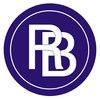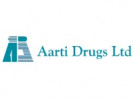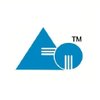
i
Kimia Biosciences
Filter interviews by
Kimia Biosciences Interview Questions, Process, and Tips
Kimia Biosciences Interview Experiences
6 interviews found
(1 Question)
- Q1. A. A background of yours profile b. How can you make a positive change in the organization.
Interview Preparation Tips
Business Analyst Interview Questions asked at other Companies
I applied via Referral and was interviewed before May 2022. There were 2 interview rounds.

(2 Questions)
- Q1. What is Chromatography ? What is pH? Titration?
- Ans.
Chromatography is a technique used to separate and analyze mixtures. pH is a measure of acidity or basicity. Titration is a method to determine the concentration of a substance in a solution.
Chromatography involves passing a mixture through a stationary phase and a mobile phase to separate its components. Examples include gas chromatography and liquid chromatography.
pH is measured on a scale of 0-14, with 7 being neutr...
- Q2. What is API & RAW material and KSM
Interview Preparation Tips
QC Chemist Interview Questions asked at other Companies
Interview Questionnaire
3 Questions
- Q1. Tell me about yourself,
- Q2. Company products and it's use
- Ans.
Our company offers a range of products that cater to various needs and industries.
Our products are designed to be user-friendly and efficient.
We offer products for industries such as healthcare, finance, and retail.
Our products are constantly updated to meet the changing needs of our customers.
We also offer customization options for our products to meet specific customer requirements.
- Q3. Internship related questions
Product Management Executive Interview Questions asked at other Companies
Interview Questionnaire
1 Question
- Q1. How to select column for buffers
- Ans.
Column selection for buffers depends on pH, ionic strength, and buffer capacity.
Consider the pH range of the buffer
Choose a buffer with appropriate pKa value
Consider the ionic strength of the buffer solution
Choose a buffer with high buffer capacity
Use online buffer selection tools for guidance
Skills evaluated in this interview
Scientist B Interview Questions asked at other Companies
Kimia Biosciences interview questions for popular designations
Analytical Chemistry Associate/Scientist Interview Questions & Answers
posted on 31 Dec 2020
I applied via Referral and was interviewed before Dec 2019. There was 1 interview round.
Interview Questionnaire
6 Questions
- Q1. Principle of lembert beer law
- Ans.
Lambert Beer Law states that the absorbance of a solution is directly proportional to the concentration of the absorbing species.
The law is used to determine the concentration of a substance in a solution by measuring its absorbance.
It assumes that the absorbing species is uniformly distributed throughout the solution.
The law is expressed as A = εcl, where A is the absorbance, ε is the molar absorptivity, c is the conc...
- Q2. What is the retardation factor
- Ans.
Retardation factor is the ratio of the distance traveled by a solute to the distance traveled by the solvent in a chromatography experiment.
Retardation factor is a dimensionless quantity.
It is used to identify and separate different components of a mixture in chromatography.
It is calculated by dividing the distance traveled by the solute by the distance traveled by the solvent.
Retardation factor values range from 0 to ...
- Q3. How to intensity increased in TLC plate
- Ans.
To increase intensity in TLC plate, use a more concentrated sample or increase the amount of sample spotted.
Use a more concentrated sample
Increase the amount of sample spotted
Use a more sensitive detection method
Increase the development time
Use a different solvent system
- Q4. Different between c8 And c18 column
- Ans.
C8 and C18 columns differ in their hydrophobicity and selectivity.
C8 columns have shorter carbon chains than C18 columns.
C8 columns are less hydrophobic than C18 columns.
C8 columns are more selective for less hydrophobic compounds.
C18 columns are more selective for more hydrophobic compounds.
C8 columns are often used for separating polar and nonpolar compounds.
C18 columns are often used for separating nonpolar compound...
- Q5. Ods and bds column differentiate
- Ans.
ODS and BDS columns are both used in chromatography but differ in their stationary phase.
ODS (Octadecylsilane) columns have a hydrophobic stationary phase and are used for non-polar compounds.
BDS (Butylsilane) columns have a more polar stationary phase and are used for polar compounds.
ODS columns are more commonly used than BDS columns.
Both columns have different selectivity and retention characteristics.
- Q6. Bunsen reaction with reaction formula
- Ans.
Bunsen reaction involves the reaction of a metal with a non-metal to form an ionic compound.
The reaction is named after Robert Bunsen, a German chemist.
It is a type of redox reaction.
The reaction formula is: Metal + Non-metal → Ionic Compound
For example, the reaction between sodium and chlorine to form sodium chloride (Na + Cl2 → 2NaCl).
Interview Preparation Tips
Skills evaluated in this interview
Top Kimia Biosciences Analytical Chemistry Associate/Scientist Interview Questions and Answers
Analytical Chemistry Associate/Scientist Interview Questions asked at other Companies
I applied via Referral and was interviewed in Oct 2019. There were 4 interview rounds.
Interview Questionnaire
3 Questions
- Q1. About technical skills
- Q2. About attitude
- Q3. Mainly vocabulary
Interview Preparation Tips
Jobs at Kimia Biosciences
Interview questions from similar companies

I applied via Naukri.com and was interviewed in Feb 2021. There were 3 interview rounds.
Interview Questionnaire
1 Question
- Q1. Everything around the JD
Interview Preparation Tips

I applied via Approached by Company and was interviewed before Jan 2022. There were 2 interview rounds.

(2 Questions)
- Q1. Knowledge about your area , company products,
- Q2. Communication skill for sale growth
Interview Preparation Tips

Assistant Manager Interview Questions & Answers
Alivira Animal Healthposted on 8 Feb 2022
I applied via Naukri.com and was interviewed in Aug 2021. There was 1 interview round.
(2 Questions)
- Q1. Make of compressor, chiller, thermopac, Boiler and other items
- Ans.
The make of compressor, chiller, thermopac, boiler, and other items vary depending on the manufacturer.
The make of the compressor can be Carrier, Emerson, or Danfoss.
The make of the chiller can be Trane, York, or Carrier.
The make of the thermopac can be Thermax, Forbes Marshall, or Balkrishna.
The make of the boiler can be Cleaver-Brooks, Fulton, or Hurst.
The make of other items can vary depending on the specific equipm
- Q2. Basic about utlities?
Interview Preparation Tips

Assistant Manager Interview Questions & Answers
Finecure Pharmaceuticalsposted on 2 Dec 2023
I applied via Approached by Company and was interviewed in Jun 2023. There were 3 interview rounds.

(1 Question)
- Q1. All technical questions having with my experience.
All basic questions
Like 1g to how many mg
1m to how many mm
Time calculation in hours to minute
Interview Preparation Tips
Kimia Biosciences Interview FAQs
Tell us how to improve this page.
Kimia Biosciences Interviews By Designations
- Kimia Biosciences QC Chemist Interview Questions
- Kimia Biosciences Product Management Executive Interview Questions
- Kimia Biosciences Analytical Chemistry Associate/Scientist Interview Questions
- Kimia Biosciences Scientist B Interview Questions
- Kimia Biosciences Business Analyst Interview Questions
- Kimia Biosciences Executive Microbiology Interview Questions
Interview Questions for Popular Designations
Kimia Biosciences Interview Process
based on 7 interviews
Interview experience
Interview Questions from Similar Companies
Kimia Biosciences Reviews and Ratings
based on 104 reviews
Rating in categories
|
Executive
34
salaries
| ₹2.4 L/yr - ₹7 L/yr |
|
Scientist B
27
salaries
| ₹3 L/yr - ₹6.2 L/yr |
|
Research Scientist
18
salaries
| ₹3 L/yr - ₹6.8 L/yr |
|
Scientist
17
salaries
| ₹2.5 L/yr - ₹6 L/yr |
|
Assistant Manager
14
salaries
| ₹6 L/yr - ₹9.4 L/yr |

Novartis Healthcare

Raptakos Brett and Company

Aarti Drugs

Themis Medicare
- Home >
- Interviews >
- Kimia Biosciences Interview Questions















